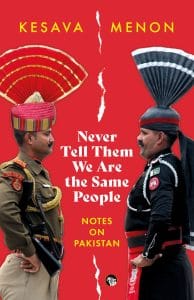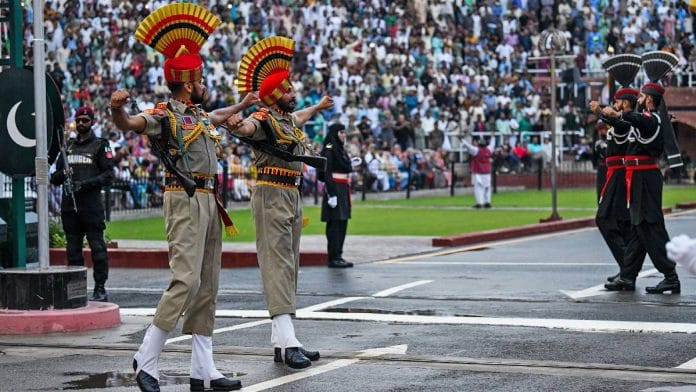They’re a ferocious people, aren’t they?’
The question was posed by an elderly gentleman in Chennai. I had been posted to the headquarters of The Hindu after my stint in Pakistan and was trying to rent accommodation. This prospective landlord, who had evidently been sheltered from the harsher realities of life, was just as obviously revealing an outlook shaped by the decades of vituperation unleashed by opinion makers in each country against the other.
How do you answer such a question without sounding patronizing, insulting or bombastic? An answer did bounce around in the recesses of my brain, that an Indian who had lived among Pakistanis for three years must be fairly formidable himself. Such a response could hardly be voiced when the point was to convince the man that though not a teetotaler or vegetarian, I was a peaceable fellow who did not strew bones around the house. An indecipherable mutter had to suffice for the moment.
Also read: Yes Bank’s Rana Kapoor preferred Black Label, could drink half a bottle without getting drunk
Indians perceive and respond to Pakistanis in all sorts of ways. At the opposite end of the spectrum from my interlocutor in Chennai was the late G.K. Singh, in his time a star of The Week magazine. He had come to Pakistan to cover the 1990 parliamentary election along with his photographer Victor George, another great professional who too was to die early and tragically while heroically doing his job. (He was so focused on capturing images at the site of a major landslide that he was taken by surprise when the hill heaved again sending rocks cascading down on him.) Victor was snapping away at a Nawaz Sharif rally when a Muslim League supporter, recognizing him as an Indian, tapped him on the shoulder and told him to go back to his country. A second later, GK tapped the offending Pakistani on his shoulder and told him that they would take him along when they went. Over drinks that evening, I asked GK whether he had not been a bit too reckless. Pat came to the reply: ‘The Muslim warrior class can never match the Jat Sikhs.’
In attempting to make a generalization about the Indian attitude towards Pakistan, I would have to say that it hovers in the space between the markers set by the above two conversations. I have used the word markers instead of poles deliberately because sentiment pools so much more densely on the one side than it does on the other. Indians who fear Pakistan are so few in number and the emotion is so dilute even among them that they can hardly be said to exert a pole’s magnetic pull. A far, far greater proportion of us looks at Pakistan with loathing and contempt, an imbalance that exposes the futility of a policy of terror. If so, many atrocities committed over so many years cannot produce anything more than a thin skein of dread among a very limited number of people, one wonders what the effectiveness of such a policy is.
However, that policy has not been abandoned. As it remains, it generates disgust, frustration and fury. Pakistani policymakers seem to have been misled by the presence of an Indian peace camp that was vociferous until recently. They seem to have missed the fact that most peaceniks too are as disgusted with terror tactics as are the bellicose among the Indians. The main difference is that the peace camp does not allow itself to slip into frustration, let alone fury. It is still hopeful of finding a magic formula that will alchemize Pakistan into reasonableness. This hope appears almost as forlorn as Pakistan’s dream of bringing India to its knees by resorting to terror. But I will reserve further thoughts on that subject for later.
Also read: For every gaali Australians give us, respond with 3 gaalis—What Ravi Shastri told the boys
While intense negativity is the default response that most Indians have towards their country’s western neighbor, there does seem to be another emotional current beneath the surface. It is not wistfulness for a happier relationship. A longing for friendship is not very widespread and the subliminal pressure probably has more to do with our need for mental calm. Few Indians want to rid themselves of the deep suspicion they harbor about our neighbor’s designs. At the same time, a state of hair-trigger belligerence does become uncomfortable over the long run. These contrary pressures appear to feed a subconscious urge to finely calibrate our outlook towards Pakistan.
 This excerpt from ‘Never Tell Them We Are the Same People: Notes on Pakistan’ by Kesava Menon has been published with permission from Speaking Tiger Books, in 2023.
This excerpt from ‘Never Tell Them We Are the Same People: Notes on Pakistan’ by Kesava Menon has been published with permission from Speaking Tiger Books, in 2023.






